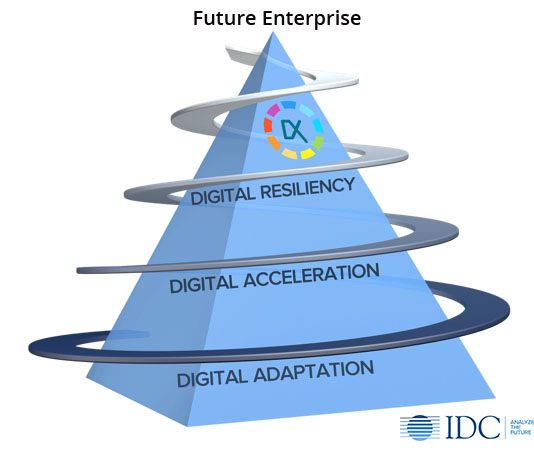The COVID-19 pandemic has demonstrated that resiliency is now a business requirement in today’s global economy. Enterprises have focused on traditional business resiliency: the organization’s ability to respond to business disruptions, restore business operations in a timely fashion, and maintain its core sense of purpose. The emphasis is on an enterprise’s business functions and processes and their ability to reinstate business as usual without too much damage.
However, these programs typically focus on safeguarding distinct enterprise functions or businesses on a piecemeal basis and look at isolated IT risks. This approach as not enough to deal with the volatility brought on by the global pandemic. Organizations are still struggling to reach a “new normal”, and this process will continue to be volatile, uncertain, complex and ambiguous (VUCA). Success in the VUCA economy will require investments in digital capabilities to not only maintain operations but also recalibrate and, most importantly, to take advantage of new opportunities.
It’s Time for Digital Resiliency
Digital resiliency is the ability for an organization to rapidly adapt to business disruptions by leveraging digital capabilities to not only restore business operations, but also capitalize on the changed conditions. Technology is a critical supporting component of this business imperative. That is why IDC believes that digital resiliency and digital acceleration are foundational elements that support the Future Enterprise.
The Future Enterprise is IDC’s vision for how firms must organize and invest to participate in increasingly digitally centric markets. Future enterprises are organizations that underpin business processes with technology, are fueled by innovation, platform-enabled, ecosystem-centric, and are digitally resilient at the core. They adopt a tech-everywhere and ecosystem-centric culture. Essentially, the future enterprise is IDC’s vision for the end state of DX. Given our experiences in 2020, we now believe that being digitally resilient is a central tenet of the future enterprise.

Who is Responsible for Digital Resiliency?
Digital resiliency represents the integration of two traditionally distinct perspectives: business resiliency and IT risk. In traditional business resiliency models, business leaders on enterprise business functions and processes, and prioritize their ability to reinstate business as usual without too much damage.
IT leaders, on the other hand, have traditionally IT risk, BCP, and disaster recovery with emphasis on the organization’s ability to maintain acceptable service levels despite severe disruptions to its IT systems.
These two approaches have historically been disparate and held in separate silos, but as these objectives combine – and technology becomes even more critical to building digital resiliency and the Future Enterprise – business and IT leaders will need to work together to adopt and execute on Digital Resiliency. In fact, the CIO is uniquely positioned on the leadership team to help achieve digital resiliency, as they are intimately familiar with C-suite level strategic thinking as well as IT operations. They and their team must act as the glue that holds individual efforts together into a cohesive process and must work on breaking down organizational silos that will impede progress.
Technology suppliers will become even more important partners to their enterprise clientele striving to prepare their organizations for future crises and should have a solid understanding of digital resiliency and how they can support digital resiliency efforts.
Introducing IDC’s Digital Resiliency Framework
What does digital resiliency look like for enterprise organizations How can they assess their own efforts, and how can technology suppliers better support them in their efforts?
IDC has created the Digital Resiliency Framework to identify digital resiliency risks and prioritize specific technology initiatives, use cases, and process/policy changes to increase resiliency. This framework empowers business leaders and IT leaders to understand the interconnected elements of digital resiliency and to assess their organization’s risk level.
By linking business outcomes to specific use cases and the associated technologies, organizations can use the framework to help them prioritize projects to improve their organization’s digital resilience across three phases of crisis response and six organizational dimensions. Technology suppliers can evaluate how their solutions support enterprises in their journey to digital resiliency.
Ready to learn more? Explore the Digital Resiliency Framework with IDC’s new eBook:




